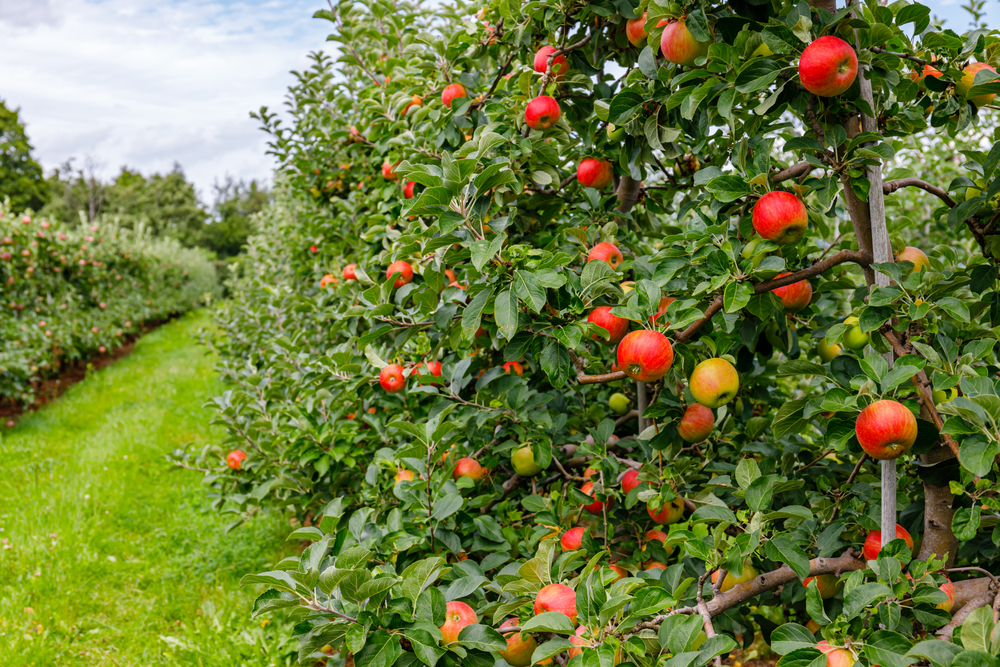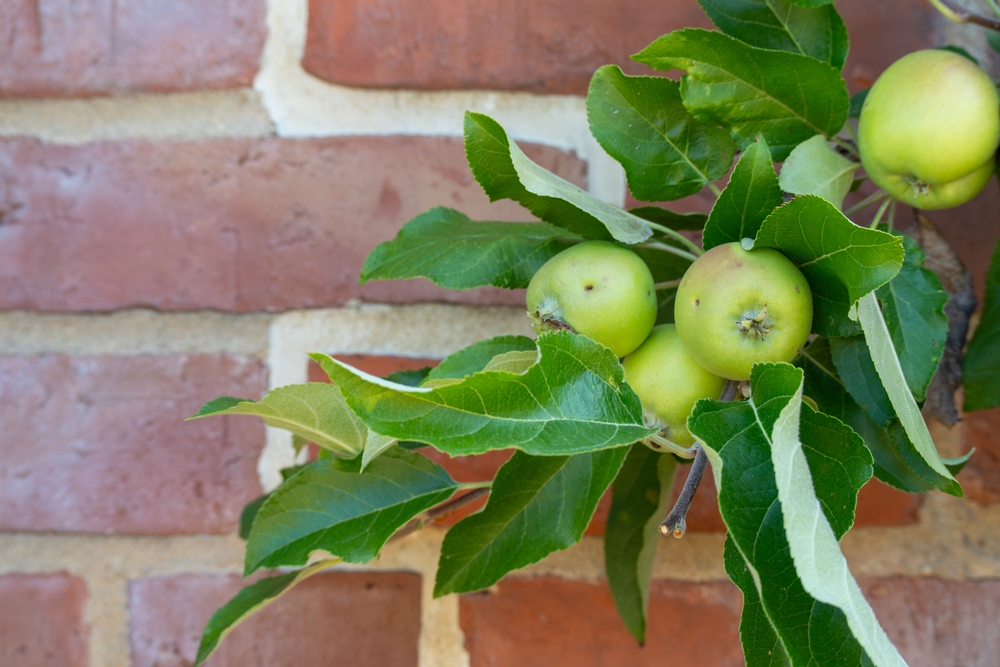
Image Source: Shutterstock.com
There’s something undeniably magical about autumn—the crisp air, the crunchy leaves, and the sudden urge to sip cider while wearing your coziest flannel. But beyond the pumpkin patches and harvest festivals, fall hides one of gardening’s best-kept secrets: it’s actually the perfect time to plant fruit trees. While most people assume spring is planting season, the pros know that autumn offers conditions that give trees a stronger, healthier start.
From cooler soil temperatures to reduced stress on young roots, this season sets the stage for sweet rewards down the line. So grab your shovel, put on that warm hoodie, and let’s dig into why fall is the ultimate tree-planting season.
Cooler Weather, Happier Roots
In summer, planting a tree can feel like sending it into a sauna with no water bottle. The hot sun stresses young trees and makes it harder for their roots to establish properly. In autumn, though, cooler air temperatures and still-warm soil create a gentler environment that encourages root growth without overheating the plant. This balance helps trees focus their energy underground—developing the foundation they’ll rely on next spring. It’s nature’s way of saying, “Let’s get you settled before the winter chill.”
Autumn Rain Does the Hard Work for You
You know that lovely, soft fall rain that makes everything smell fresh? That’s your new best friend when planting fruit trees. Autumn typically brings more consistent moisture, which means less watering work for you and less stress for your tree. Instead of fighting drought or heat waves, young roots can drink deeply and establish themselves comfortably. By the time spring rolls around, your fruit tree will be hydrated, happy, and ready to burst into life.
No Summer Heat Stress (for You or the Tree)
Let’s be honest—digging holes in summer heat isn’t anyone’s idea of fun. Fall planting spares you (and your new sapling) from scorching afternoons and relentless sun. Lower temperatures mean you can spend more time outdoors without feeling like you’ve run a marathon, and your tree won’t be battling dehydration. The mild conditions also make transplanting less traumatic, helping young trees settle into their new home with ease. So really, planting in autumn is as much a gift to yourself as it is to your garden.
More Time for Roots to Grow Before Spring
One of the biggest benefits of fall planting is that the tree’s energy goes straight to its roots—not leaves, not flowers, just strong, stable foundations. Since growth above ground slows in autumn, all the focus turns to what’s happening beneath the surface. The result? A solid root system that’s ready to fuel explosive growth when spring arrives. Think of it as letting your tree “train” through the winter, so it hits the ground running once the weather warms up. By next summer, you’ll notice stronger branches and faster fruiting—all thanks to those cozy fall roots.
Fewer Pests and Diseases to Worry About
Summer’s heat brings more than just sweat—it brings swarms of insects and plant diseases too. By fall, most of those pests have packed up for the season, leaving your young fruit trees in peace. Fewer bugs and fungal spores mean your saplings can establish themselves without constant battles or chemical treatments. Plus, cooler temperatures slow down the spread of soil-borne diseases, reducing the risk of infection. In short, autumn gives your tree the calm, healthy start it deserves—no pest parties allowed.
Nurseries Offer Better Prices and Mature Trees
Here’s an underrated perk of fall planting: end-of-season deals. Nurseries often lower prices in autumn to clear out inventory, meaning you can snag top-quality fruit trees at a fraction of the cost. Not only that, but by this time of year, most trees have had a full growing season, so they’re sturdier and better developed. This gives you a head start when planting—your tree isn’t a fragile baby but a well-prepared adolescent ready for its permanent home. Add in the savings, and it’s a win-win for both your wallet and your garden.
Less Competition, More Growth
When you plant in spring, your new fruit tree has to compete with every other plant waking up from winter—grass, weeds, and hungry flowers all stealing nutrients. In fall, the competition is dramatically reduced, allowing your tree to take in more of what it needs to thrive. With fewer roots crowding the soil and less foliage blocking sunlight, young trees can focus completely on establishing themselves. This quiet season gives your saplings the breathing room to settle in and strengthen. By the time everything else starts growing again, your tree is already miles ahead.

Image Source: Shutterstock.com
The Reward: A Faster, Healthier Start Come Spring
The real magic of planting fruit trees in autumn is what happens months later. Come spring, your tree doesn’t have to waste time establishing roots—it’s already done the work. That means earlier budding, stronger growth, and sometimes even a quicker first harvest. The stress-free start you gave it in fall translates into resilience and vigor when it counts most. It’s the gardening version of a head start—and it all begins when the leaves start to fall.
Fall in Love with Fall Planting
Autumn isn’t just for pumpkin spice and hayrides—it’s the secret weapon for successful fruit tree planting. Cooler temperatures, fewer pests, and perfect soil conditions create an environment that encourages deep root growth and long-term health. For gardeners and homeowners alike, it’s the ideal season to set your orchard dreams in motion.
Have you ever planted fruit trees in the fall? Share your stories, questions, or favorite tree varieties in the comments below.
You May Also Like…
Why Unharvested Fruit Can Damage Trees in Fall
5 Compelling Reasons to Purchase Seeds Over Harvesting from Fruits
11 Mistakes Gardeners Make When Storing Produce
10 Crops to Harvest Twice if You Plant Them in Fall
7 Composting Tricks That Only Work in Autumn
Leave a Reply